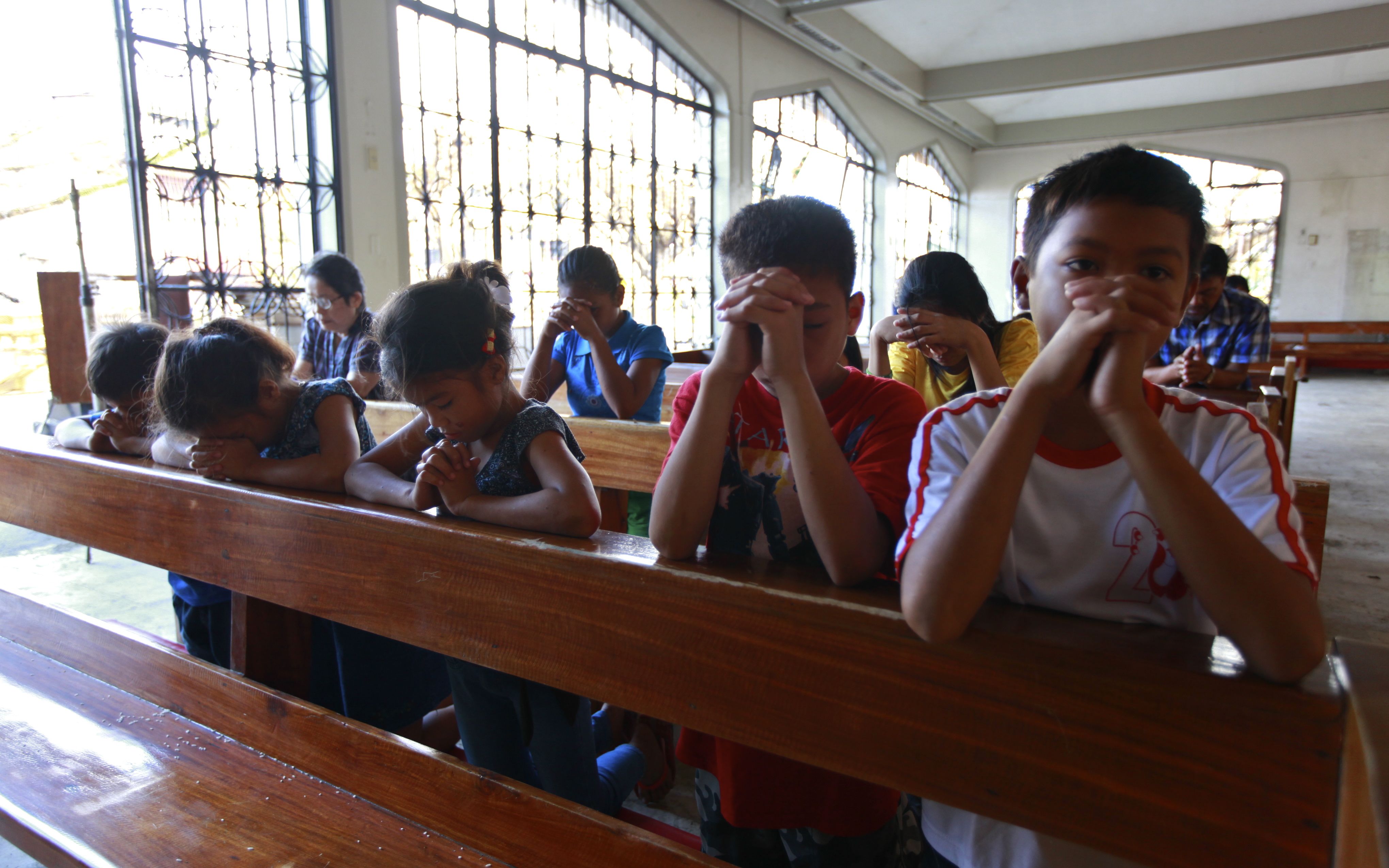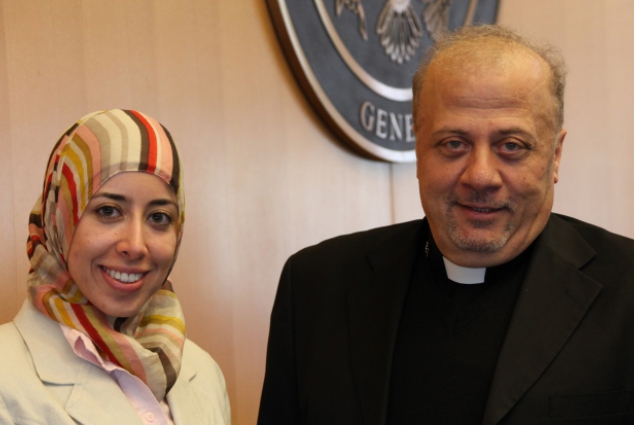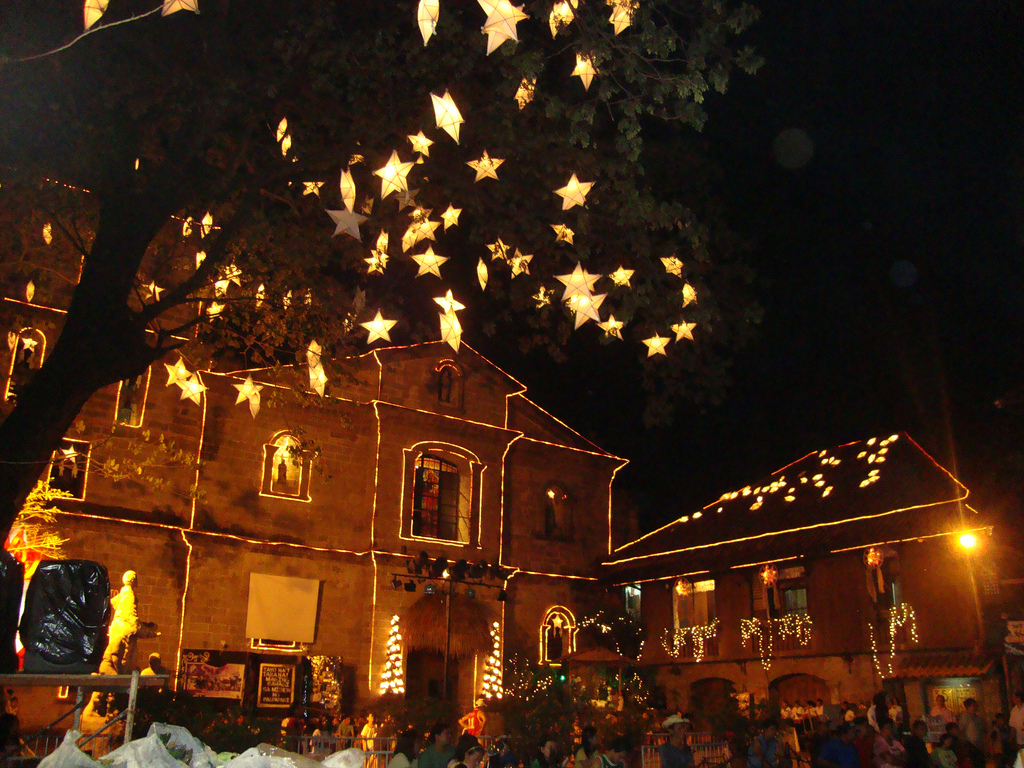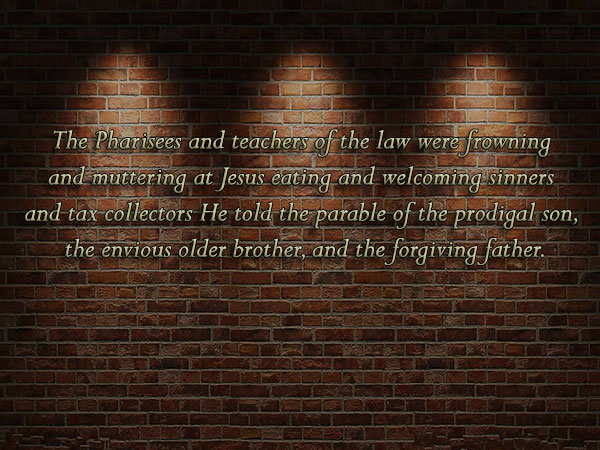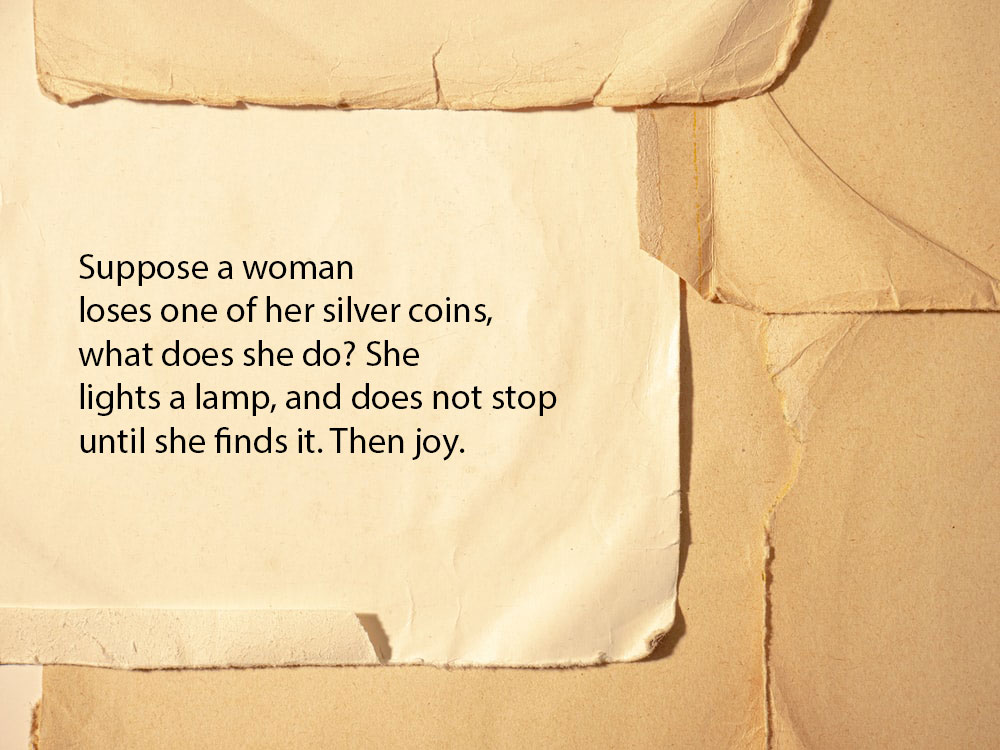By Stacey and Josh Noem
Sometimes at the end of Mass a parishioner comes up to us and says “Your three children are SO well behaved!” Our standard response is either, “Thank you. We work at it” or “Thank you, some days are better than others.” The “better” days are the product of years of articles and brochures we read on taking children to Mass. Here is the distilled wisdom we rely upon.
Before Church
- Make sure children are well-fed right before Mass. They do not need to fast, nor will fasting help them to be on their best behavior during Mass. We personally do not think it is appropriate to take snacks into the pew. Our exception to this is a non-spill drink cup that bought us enough time to hear the homily once in a while.
- Beginning even with the smallest infants, dress them in some special clothing that they wear only for church or other special events. This does not have to be expensive and can be as simple as a nice pair of shoes. It helps them to identify what we do at Mass as different from everyday activity.
- Check your diaper bag to make sure it is stocked for any possible needs. Consider including a small toy or book that your child sees only on Sunday at Mass. These should be quiet and made of soft material so that they do not distract those around you from their prayer while they are being played with or in case they are dropped.
- Put on a fresh diaper or visit the bathroom right before walking out the door of your home or into the church.
For toddlers or older children
- You might read the readings in the car on the way to church. This could even be the job of an older child. Then everyone hears them at least once in case someone has to step out during a portion of the Mass.
- Before going into the church take a moment to remind children what you are about to do. Make sure they know what their job is at Mass. For us, we say that their job is to be quiet/still, to participate by sharing their voices and to pray. Their job is also not to distract those around them from praying.
At Church
- Sit up front. Yes, sit even in the first pew if it is appropriate at your parish. It can feel scary and even a little out of control the first few times, but it makes a world of difference for little ones to be able to see the action. Over time it also helps them to understand what is most essential about Mass without the distraction of rows and rows of backsides between them and the altar.
- We physically hold our children in our arms during Mass. In fact, we adopted the position that our children’s feet do not touch the ground during Mass until they are three years old. This helps in many ways. The children get a get a better view; as they grow and mature we can talk them through the stories and the actions; and we have a bit more control over their behavior. If an infant or toddler gets squirmy, often switching who is holding them is enough to calm them down. Otherwise we might play a quiet game of “point to the…candles, priest, altar, cross, etc.”
- During their two-year-old year, we begin to let our children stand for a portion of Mass or try sitting next to us quietly, instead of on our laps. Then when they turn three it is a special milestone to be big enough to stand, sit and kneel all on their own (although if they can’t see over the pew we have them stand during the kneeling portions of the Eucharistic Prayer).
- If an infant or toddler makes a little noise during Mass and settles down right away, try not to feel self-conscious. Most folks except for those closest to you do not even notice. And even if they do notice, give your fellow parishioners credit for being adults who can focus through a small distraction.
- If a child cries or makes continual noise, it is best to calmly step out of the pew and take the child out of the main assembly until they have calmed down or are quiet. However, it is important to return to the worship space as soon as they are quiet, so that children do not begin to associate poor or disruptive behavior with a pass to get out of Mass. Just stand against the wall until it is appropriate to return to the pew. Our experience is that stepping out and returning even a few times is not nearly as disruptive as a crying baby and parishioners appreciate your consideration of their attempt to pray. Those that are parents understand completely.
After Mass
- Praise your children abundantly for their good behavior.
- If they need some improvement, mention briefly how they might do better next week and explain why. Let them know that you will help them by trying to remind them before the next Mass.
- Answer questions children have about Mass and encourage them to understand the liturgy and its place in our lives.
- For older children consider taking time to discuss the readings and the homily.
In taking our children to Mass we operate on the principle that we need to teach our children how to be in church as long as it does not distract others around us from their prayer. Some days are better than others, but the gift of passing on how we pray as Catholics is worth all of the challenges.
As parents, and leaders of our domestic church, we are responsible for forming our children in our Catholic faith. There is no more important experience to Catholics than the Mass, so it is crucial to help children understand and participate in liturgy as much as they are able. At times, it has seemed as though the only thing we accomplished at Mass was the exercise of standing and walking with a grumpy baby. But we also know that children do not remain little for long and they rise to our expectations. We will have plenty of opportunities to experience transcendent prayer at Mass when our children are teenagers or out of the house. For now, though, our primary job is to make sure they “get” what happens at Mass. We find that God has found ways to feed us, even on the most difficult of days with a teething toddler.
Post Credit: www.foryourmarriage.org


